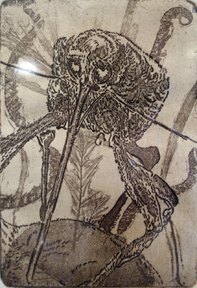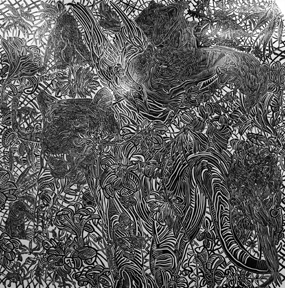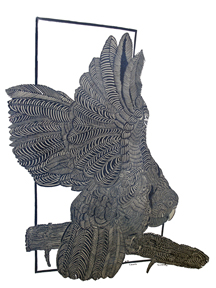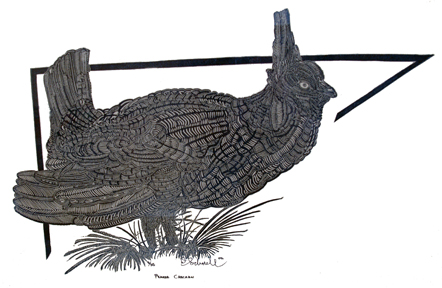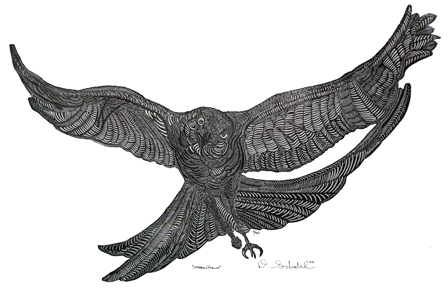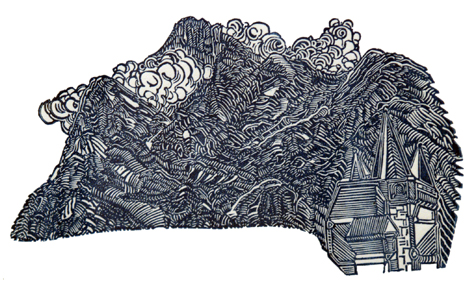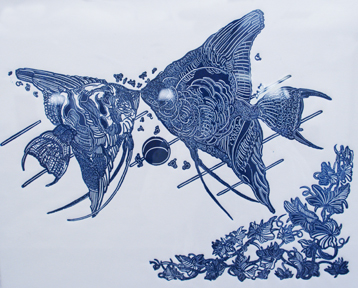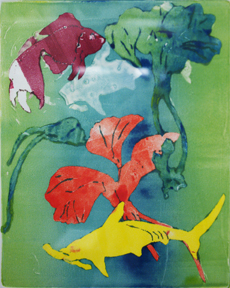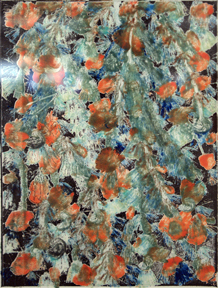Linocuts by David E. Schendel
David E. Schendel (1961-2009) was born in Frankfurt, Germany, but grew up in Fort Sill, Oklahoma. He attended the College of San Francisco, studying art and printmaking.
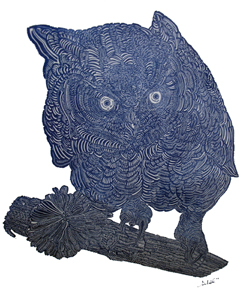
Linocut is a printmaking technique, a variant of woodcut, in which a sheet of linoleum is used for the relief surface. A design is cut into the linoleum surface with a sharp knife, V-shaped chisel or gouge, with the raised (uncarved) areas representing a reversal (mirror image) of the parts to show printed. The linoleum sheet is inked with a roller (called a brayer), and then pressed onto paper or fabric. The actual printing can be done by hand or with a press.
As linoleum has no particular direction to its grain and does not tend to split, it is easier to obtain certain artistic effects than with most woods, although the resultant prints lack the wood character of wood block printing. Linoleum is also much easier to cut than wood, which must be carved away, but the pressure of the printing process degrades the plate faster. It is also difficult to create larger works due to the material's fragility.
Although linoleum as a floor covering dates to the 1860s, the linocut was invented by the artists of Die Brücke in Germany between 1905-13. Color linocuts can be made by using a different block for each color, as in woodcut. But, as Pablo Picasso demonstrated quite effectively, such prints can also be achieved using a single piece of linoleum in what is called the 'reductive' print method. Essentially, after each successive color is imprinted onto the paper, the artist then cleans the lino plate and then cuts away what will not be imprinted for the next applied color.
Linocuts by David E. Schendel will be on display in the lobby level of Mullins Library through June 30th. For more information, call 479-575-6702.
(Click thumbnail image to enlarge.)
